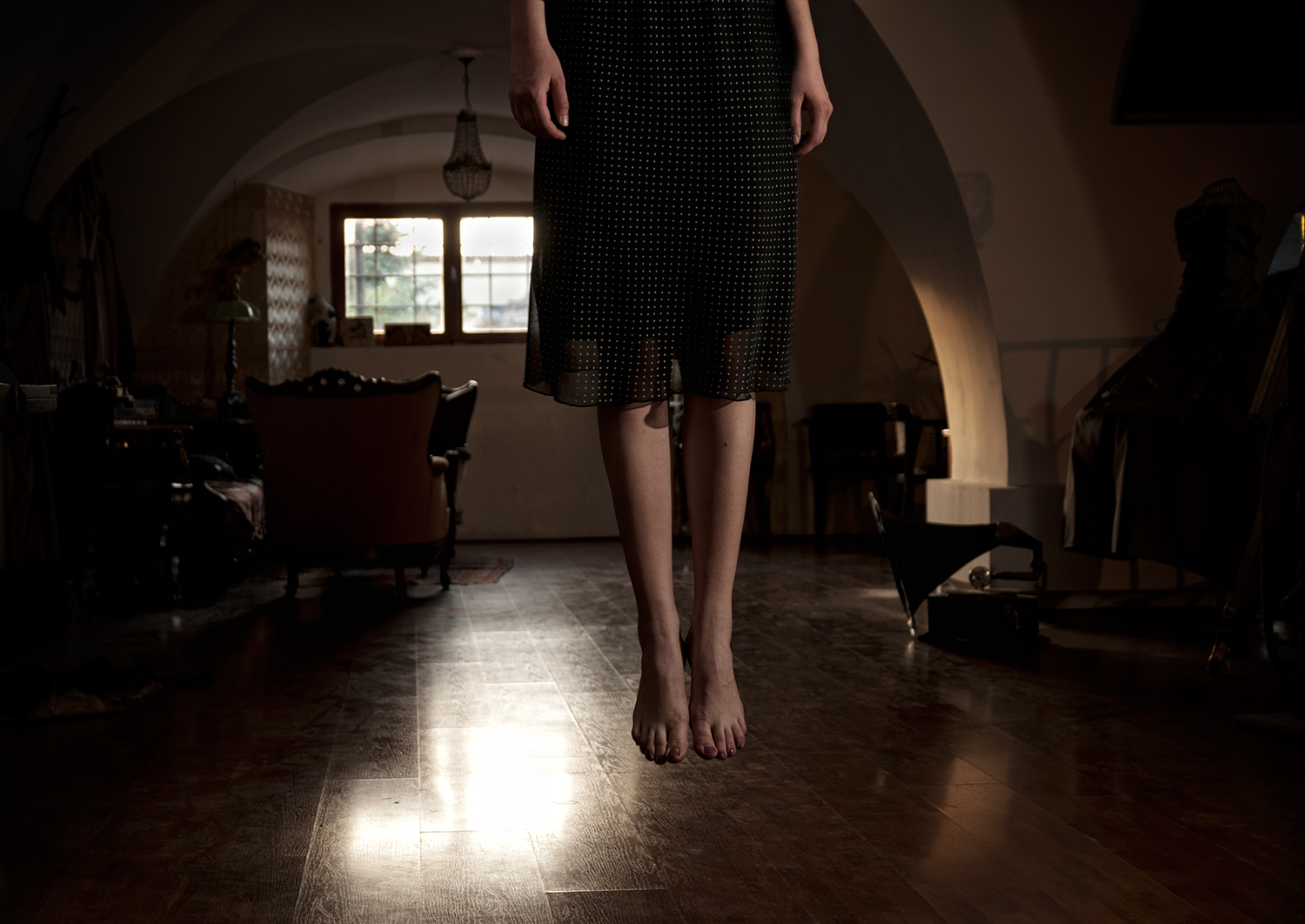
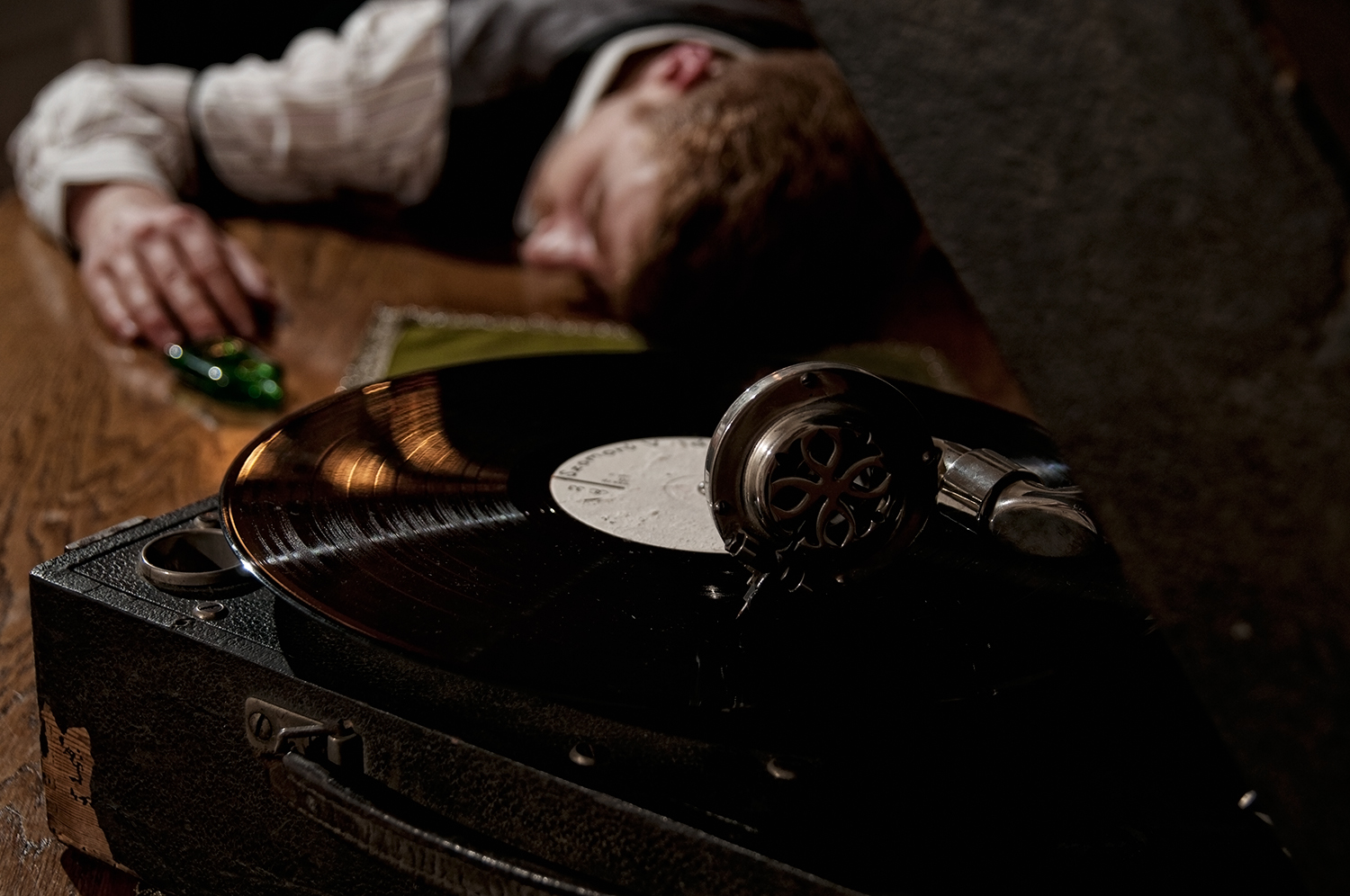
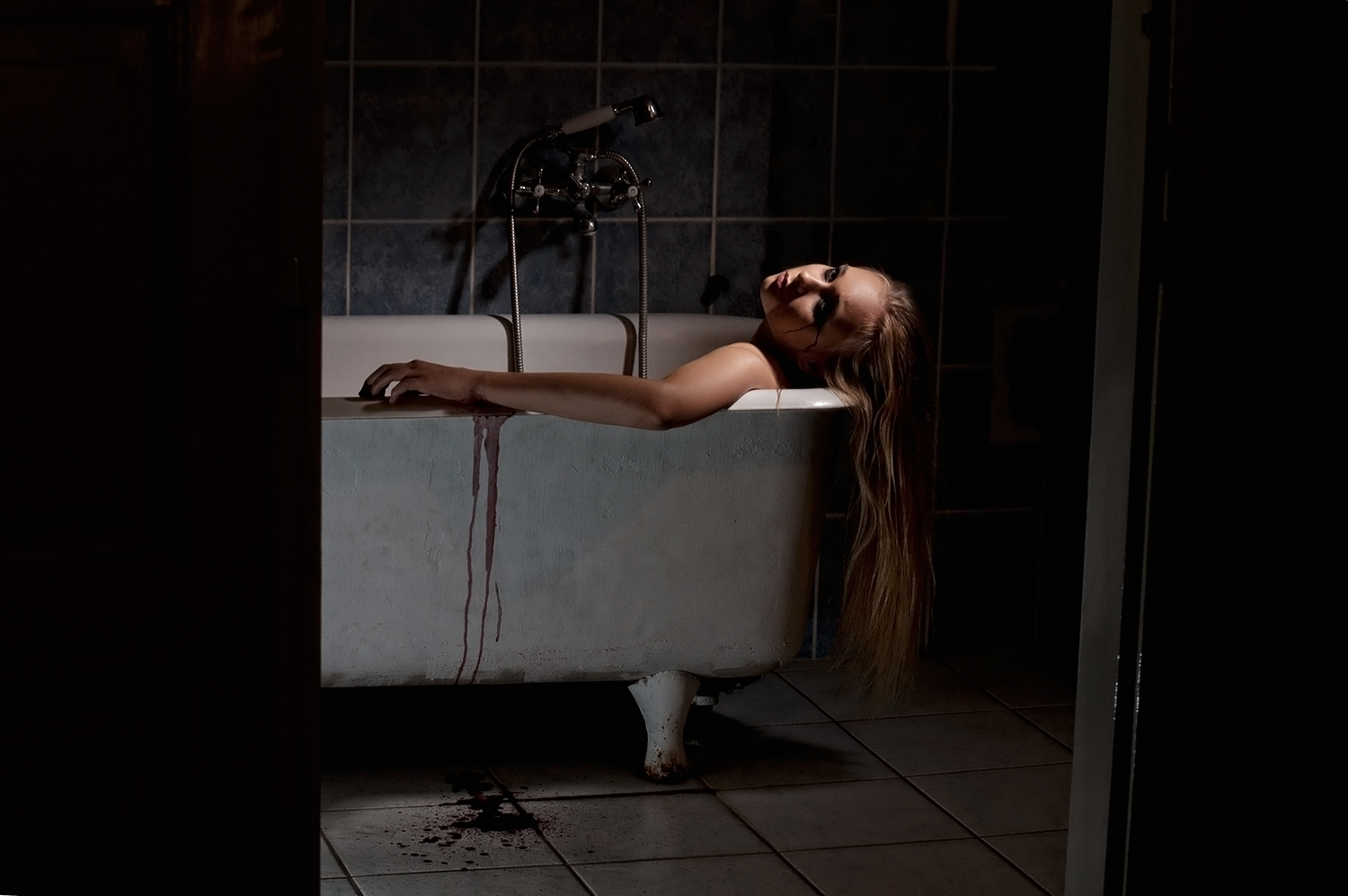
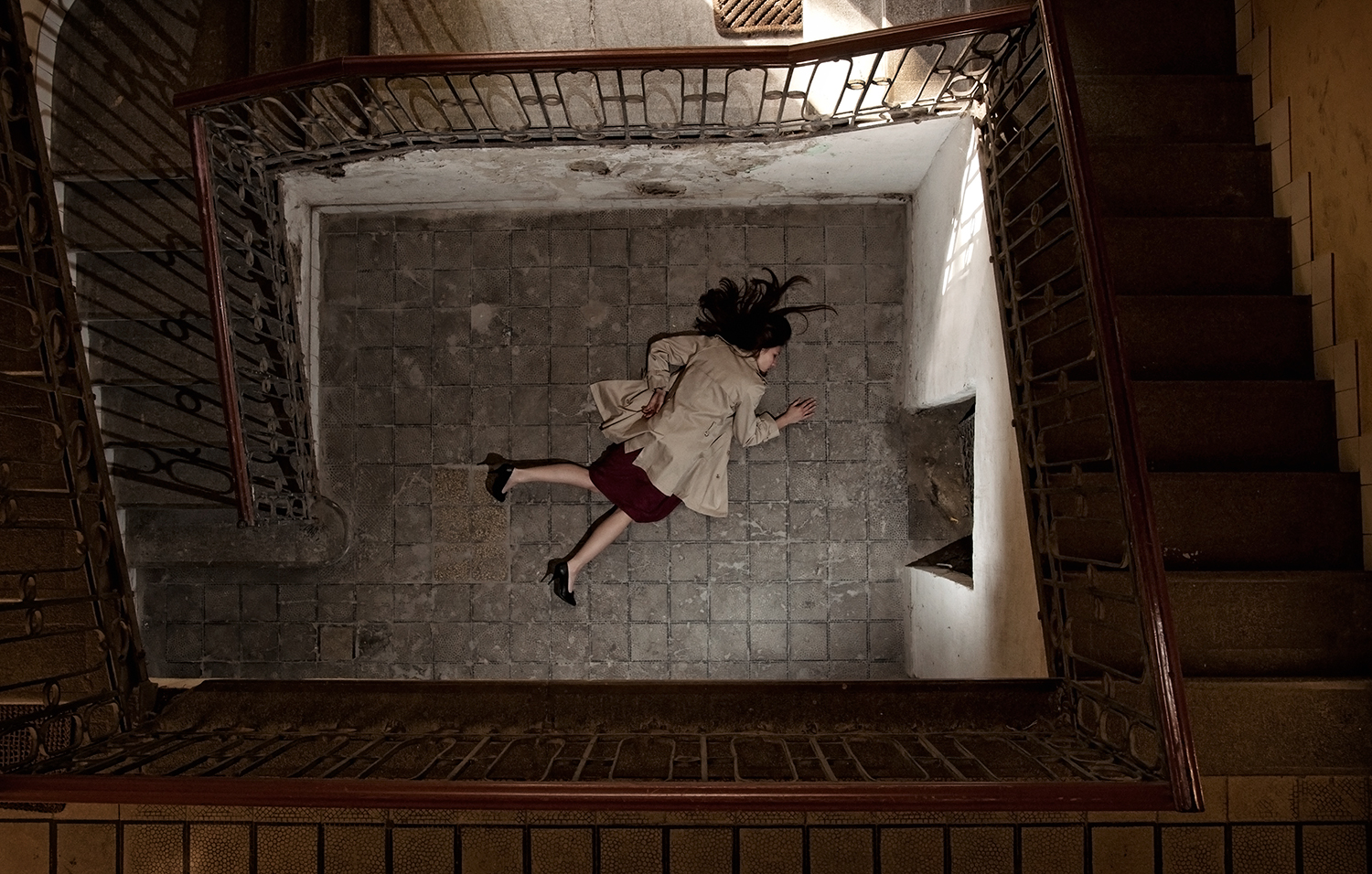
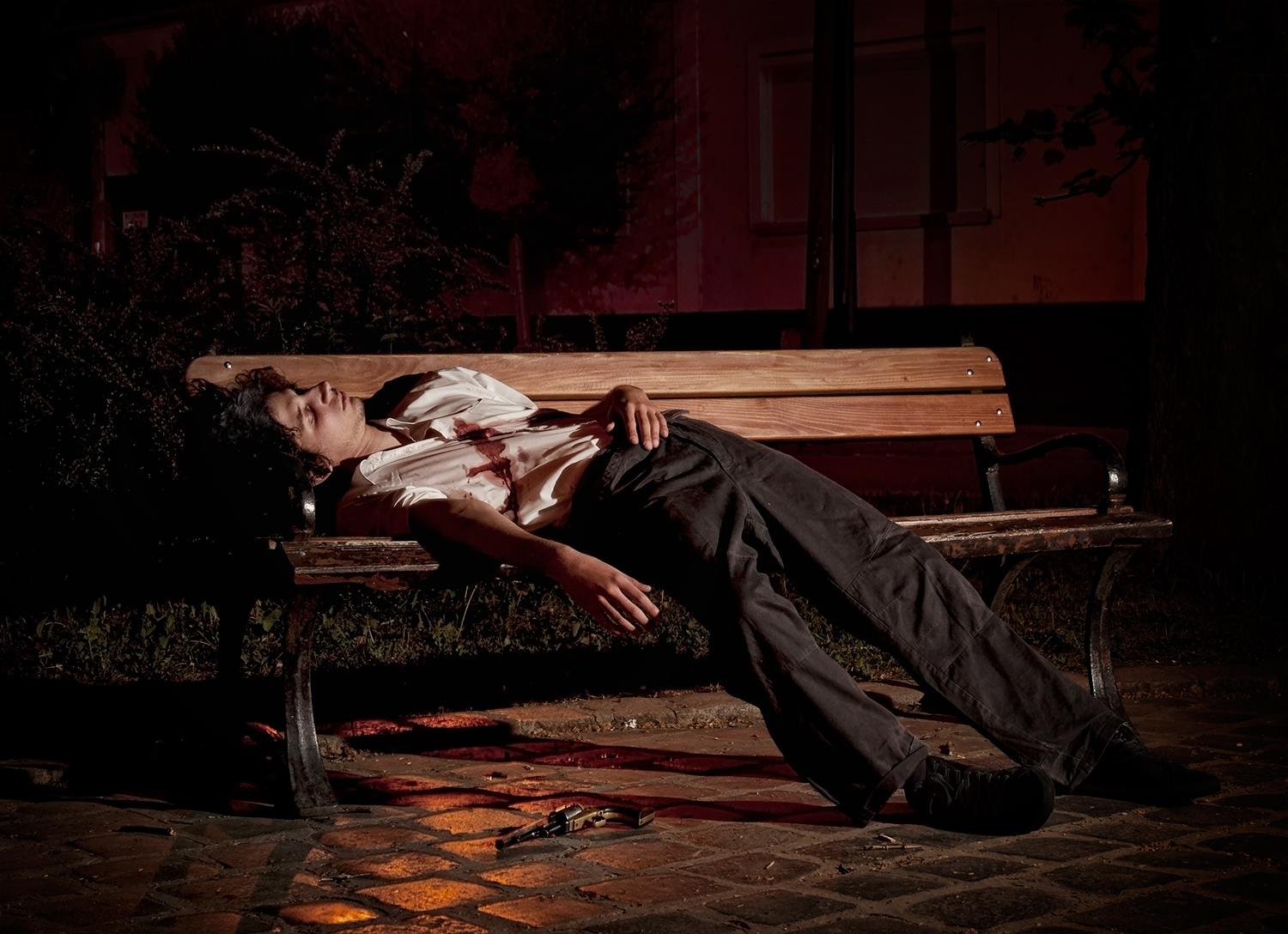

This photo sequence is based on the story of the most well-known Hungarian song, ‘Gloomy Sunday’. The lyrics were written by László Jávor, and the song was composed by Rezső Seress in 1933. It became world famous in its own time: it was covered by great musicians such as Billie Holiday, Ray Charles and Paul Whiteman to name but a few. Although the song had a morbid reputation, it enjoys a macabre infamy: people consider this song to be a suicide anthem. There is a recurring legend that claims that many people committed suicide while listening to ‘Gloomy Sunday’. The images narrate the fictional stories of these suicidal young people.
A Szomorú vasárnap talán minden idők legismertebb magyar dala. Szövegét Jávor László írta, a zenét Seress Rezső szerezte és játszotta éveken át a Dob utcai Kispipa vendéglőben. Már a 30-as években ráragadt az „Öngyilkosok himnusza” név: bár a kor egyik slágerévé vált, és Billie Holiday-től Ray Charles-ig rengetegen feldolgozták, valódi hírnevét annak köszönheti, hogy sok fiatal ezt a dalt hallgatta, mielőtt végzett magával, szerte a világon. Seress Rezső világhíre ellenére sosem hagyta el Budapestet, de még a kerületet sem, amelyben élt. Ő maga is öngyilkos lett. Ezek a képek a szuicid fiatalok fiktív történeteit mesélik el, melyek akár igazak is lehetnek.
Mai Manó House - House of Hungarian Photographers - ESSL Art Award Group exhibition Budapest, 2013
Art Bázis - Solo Exhibition Budapest, 2013



